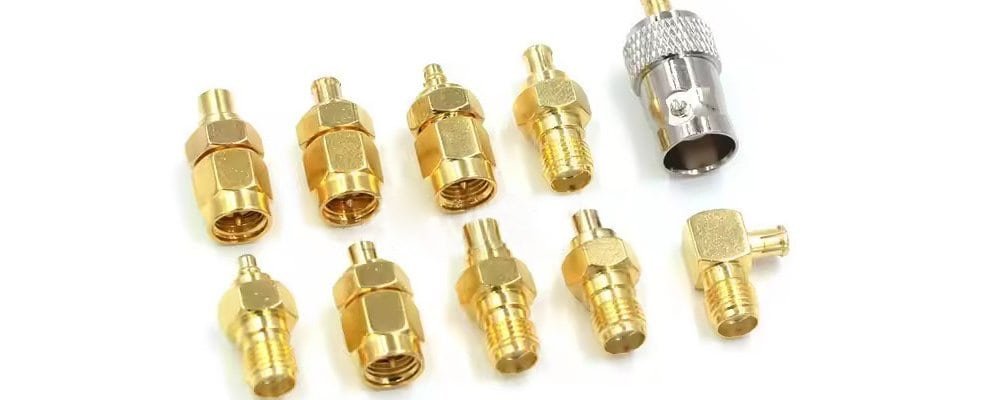What is the difference between 2 pin and MMCX connectors?

26
Jun
 Coaxial Cable Assembly
Coaxial Cable Assembly
 Microwave Test Cable
Microwave Test Cable
 Coaxial RF Connector
Coaxial RF Connector
 Coaxial RF Adapter
Coaxial RF Adapter
 Coaxial RF Termination
Coaxial RF Termination
 Coaxial RF Test Probe
Coaxial RF Test Probe
 Coaxial RF Attenuator
Coaxial RF Attenuator
 RF Switches
RF Switches
 Coaxial RF Power Dividers
Coaxial RF Power Dividers
Choosing the right connector for your electronic project can be challenging. Two popular options are 2-pin connectors and MMCX connectors, each with unique features. This article dives into their differences, spotlighting the MMCX female connector, to guide you in selecting the best fit for your needs. Whether you’re designing audio equipment or powering devices, understanding these connectors is key.
MMCX (Micro-Miniature Coaxial) connectors are small RF connectors designed for high-frequency applications up to 6 GHz. Known for their snap-on design, they ensure a secure, easy-to-use connection. The mmcx connector female, or MMCX jack, is the device-mounted receptacle that pairs with the MMCX male connector on cables like the MMCX cable or MMCX connector cable.
MMCX connectors vary to meet specific needs:
These connectors shine in:
2-pin connectors are basic electrical connectors with two contacts—typically a plug and socket. They’re built for simple power or signal transfer in low-voltage setups, offering easy plug-and-play functionality.
Varieties include:
Common uses are:
The choice between 2-pin and MMCX connectors hinges on your project’s demands. For engineers comparing “mmcx cable vs 2 pin”,”mmcx connector vs 2 pin” prioritize operating frequency, available space, mechanical retention and expected mating cycles. The MMCX female is ideal for compact, high-frequency and rugged audio or RF applications where controlled impedance and a secure snap-fit improve performance, while 2-pin connectors deliver a simple, cost-effective solution for basic power and low-frequency signal connections. As an integrated manufacturing and trading partner serving OEMs, system integrators and contract manufacturers, we recommend assessing frequency range, PCB or cable footprint, durability requirements and assembly workflow to choose the connector that maximizes reliability and total cost of ownership.
 Coaxial Cable Assembly
Coaxial Cable Assembly
 Microwave Test Cable
Microwave Test Cable
 Coaxial RF Connector
Coaxial RF Connector
 Coaxial RF Adapter
Coaxial RF Adapter
 Coaxial RF Termination
Coaxial RF Termination
 Coaxial RF Test Probe
Coaxial RF Test Probe
 Coaxial RF Attenuator
Coaxial RF Attenuator
 RF Switches
RF Switches
 Coaxial RF Power Dividers
Coaxial RF Power Dividers Coaxial Cable Assembly
Coaxial Cable Assembly
 Microwave Test Cable
Microwave Test Cable
 Coaxial RF Connector
Coaxial RF Connector
 Coaxial RF Adapter
Coaxial RF Adapter
 Coaxial RF Termination
Coaxial RF Termination
 Coaxial RF Test Probe
Coaxial RF Test Probe
 Coaxial RF Attenuator
Coaxial RF Attenuator
 RF Switches
RF Switches
 Coaxial RF Power Dividers
Coaxial RF Power DividersNo account yet?
Create an Account